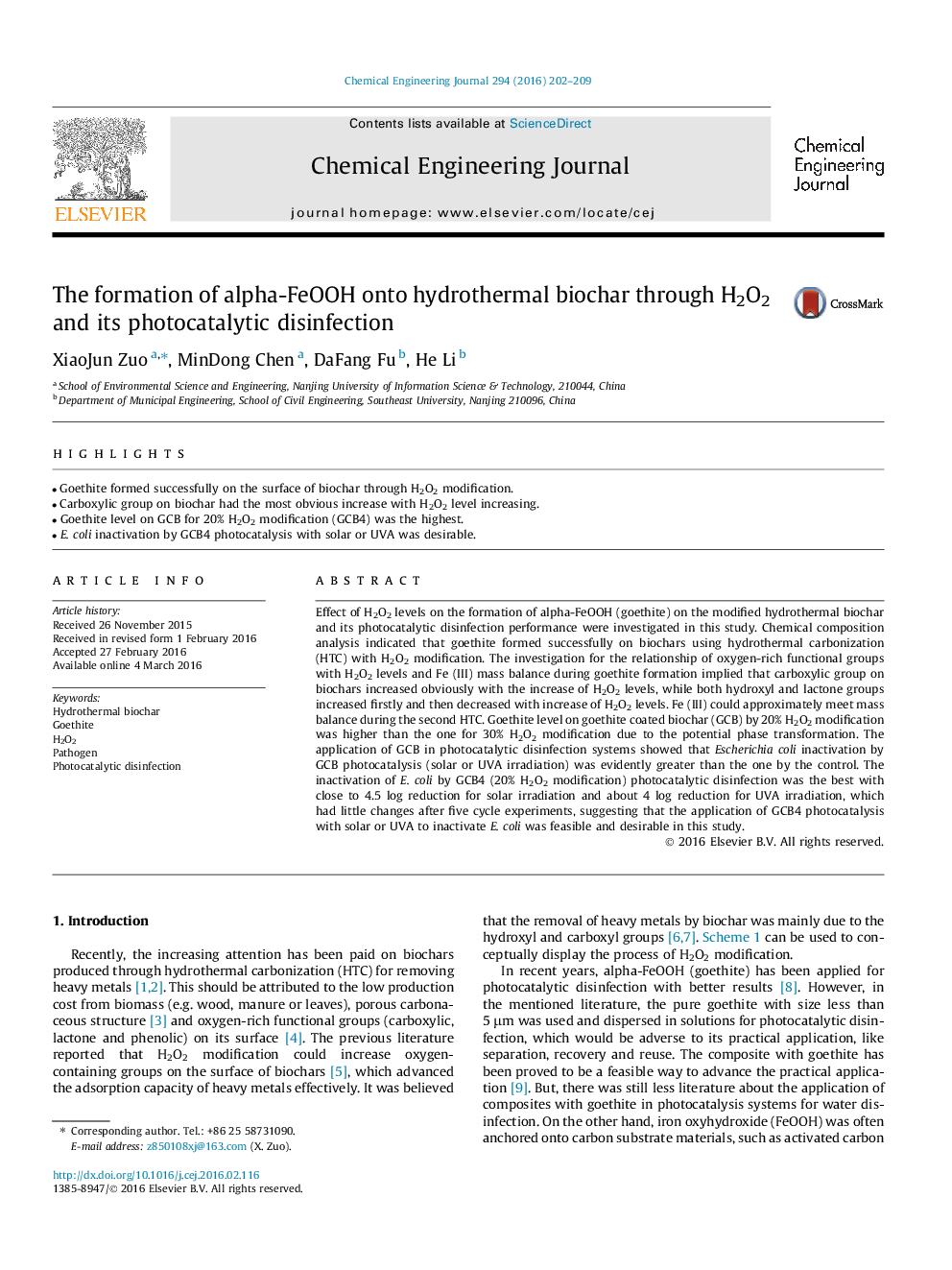| کد مقاله | کد نشریه | سال انتشار | مقاله انگلیسی | نسخه تمام متن |
|---|---|---|---|---|
| 145709 | 456349 | 2016 | 8 صفحه PDF | دانلود رایگان |

• Goethite formed successfully on the surface of biochar through H2O2 modification.
• Carboxylic group on biochar had the most obvious increase with H2O2 level increasing.
• Goethite level on GCB for 20% H2O2 modification (GCB4) was the highest.
• E. coli inactivation by GCB4 photocatalysis with solar or UVA was desirable.
Effect of H2O2 levels on the formation of alpha-FeOOH (goethite) on the modified hydrothermal biochar and its photocatalytic disinfection performance were investigated in this study. Chemical composition analysis indicated that goethite formed successfully on biochars using hydrothermal carbonization (HTC) with H2O2 modification. The investigation for the relationship of oxygen-rich functional groups with H2O2 levels and Fe (III) mass balance during goethite formation implied that carboxylic group on biochars increased obviously with the increase of H2O2 levels, while both hydroxyl and lactone groups increased firstly and then decreased with increase of H2O2 levels. Fe (III) could approximately meet mass balance during the second HTC. Goethite level on goethite coated biochar (GCB) by 20% H2O2 modification was higher than the one for 30% H2O2 modification due to the potential phase transformation. The application of GCB in photocatalytic disinfection systems showed that Escherichia coli inactivation by GCB photocatalysis (solar or UVA irradiation) was evidently greater than the one by the control. The inactivation of E. coli by GCB4 (20% H2O2 modification) photocatalytic disinfection was the best with close to 4.5 log reduction for solar irradiation and about 4 log reduction for UVA irradiation, which had little changes after five cycle experiments, suggesting that the application of GCB4 photocatalysis with solar or UVA to inactivate E. coli was feasible and desirable in this study.
Journal: Chemical Engineering Journal - Volume 294, 15 June 2016, Pages 202–209